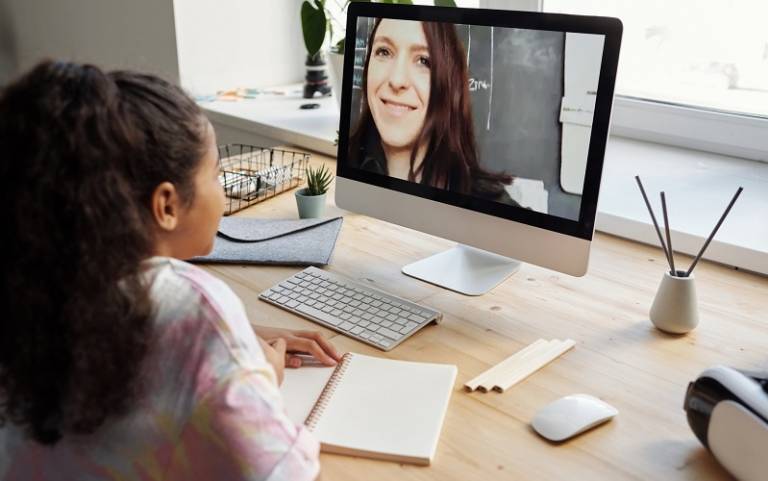Educational gaps are growing during lockdown
18 May 2020
Children from better-off households are spending 30% more time each day on educational activities than children from the poorest fifth of households, according to research by UCL Institute of Education (IOE) academic Almudena Sevilla and the Institute of Fiscal Studies.

This gap of an hour and a quarter every day means that children in better-off families will already have done extra home learning hours equivalent to a week and a half of full-time school compared with poorer children by 1 June, when some students could return to school. If schools were to remain closed until the end of the current term, that gap would grow to over three weeks.
As well as spending more time on educational activities overall, pupils from better-off households are more likely to spend time on activities that may be particularly beneficial, such as online classes and with private tutors. Online classes and other active teaching are more prevalent in the private sector than in the state sector. And within the state sector, higher-income pupils are more likely to attend schools that provide online teaching.
The research was conducted through a specially-designed online survey of over 4,000 parents in England between 29 April and 12 May.
The researchers suggest that school closures could increase educational inequalities. This is because pupils from better-off families are spending longer on home learning; they have access to more individualised resources such as tutoring or chats with teachers; they have a better home set-up for distance learning; and their parents report feeling more able to support them. The authors argue that policymakers should already be thinking about how to address the gaps in education that the crisis is widening.
The research, supported by the Nuffield Foundation, on learning during lockdown also finds that children from the top fifth of the income distribution are twice as likely as the poorest children to be getting private tutoring. And among children who have tutors, more affluent students spend longer being tutored. 12% of the most affluent students receive an hour or more of private tuition each school day.
Better-off students also have more resources for home learning. Technology is a challenge for the 14% of less well-off students who do not have a computer or tablet to access schoolwork. But study space – which is harder for policy to address – seems to be an even bigger constraint: 58% of primary school students in the poorest families do not have access to their own dedicated study space.
The researchers also found that most parents are finding supporting home learning difficult. Almost 60% of the parents of primary school children, and almost half of the parents of secondary school children, report that they are finding it quite or very hard to support their children’s learning at home. However, most students – 74% of those in primary school and 79% of those in secondary school – are completing most or all their schoolwork.
Even so, under half of parents currently state they would be willing to send their child back to school if given the choice. And less affluent parents, whose children appear least equipped for coping with home learning, are more likely than others not to want to send their children back to school.
Links
- Read the report: 'Learning during the lockdown: real-time data on children’s experiences during home learning'
- Institute for Fiscal Studies
- View Professor Almudena Sevilla's research profile
- COVID-19 research at UCL Institute of Education
- Centre for Time Use Research
- Department of Social Science
 Close
Close

